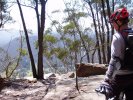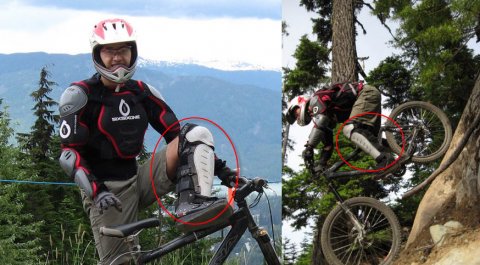You are hereForums / General Discussion / NoBMoB Chat / Riding with a repaired achilles rupture
Riding with a repaired achilles rupture
Is anyone familiar with recovery from an achilles rupture and riding trails with the boot on?
Ruptured my right leg a few weeks ago and currently in the robocop boot.
My ortho surgeon is not comfortable with the idea of riding, pointing out traction issues and reinjury, so advised against it.
But quite a few patients have hit the road first and eventually onto the trails, with the exception of this fella pictured.
http://achillesblog.com/peterh/2009/08/
I have flat pedals on my AM rig and dont really intend to hit the tech stuff until later in my recovery.
- Login to post comments


Against medical advice and because it didn't feel too bad I went riding a few weeks after tearing a calf muscle.
It tore again.
It hurt a lot more the second time, took months to repair and even now, years later I can still feel it.
As I understand things, based on a song about bones, the Calf muscle is connected to the Achilles Tendon: so I recommend you *do not* ride for a while.
I stuffed up torn TFC cartilage just at the end of 3 months of strengthening and Physio by riding too soon and lost about another 6 months. Still get spanked by mates on a DH bike, never caught up on the skills from losing that much riding.
I now respect soft tissue. If it was just bones then I reckon that's a different story so long as you keep the loading down and you are enough weeks in. Have been known to demo a new bike off some stairs while still recovering from broken bones.
.
.
Soft tissue takes longer to come good than a straight bone fracture. Take it easy.
Take it easy.
If you are concerned about losing strength, once you get the green light I found eccentric exercises most helpful for rebuilding and recovery.
By that I do *not* mean imitating John Cleese and the Ministry of Silly Walks , but exercises where the focus is on taking the majority of the load while lengthening the muscle. So if you were to be doing seated calf raises on a machine, you would be taking it much more slowly releasing the weight than lifting it. Possibly you might start out with using your other foot to assist with the lift on each rep.
, but exercises where the focus is on taking the majority of the load while lengthening the muscle. So if you were to be doing seated calf raises on a machine, you would be taking it much more slowly releasing the weight than lifting it. Possibly you might start out with using your other foot to assist with the lift on each rep.
Occasionally I get niggles with tenderness at muscle and tendon attachment points if I have just lifted my training volume or am returning after time off injured or sick, and I find these eccentric type exercises to be the most helpful with gaining the necessary strengthening without causing further irritation.
Your physio will be able to explain more.